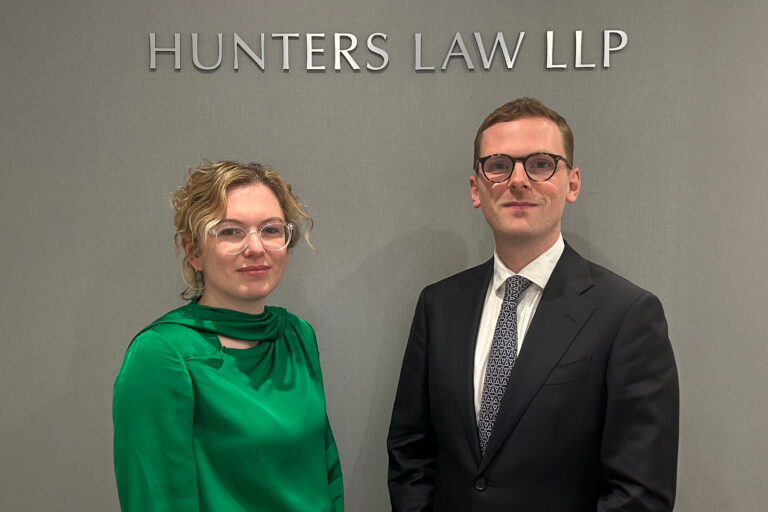Daniel Watson examines Wills being witnessed remotely by video-link in Taxation

This article was originally published in Taxation and can be accessed here.
Where there’s a will…
…there’s a way. And for those advising on estates and inheritance tax, the witnessing of wills during lockdown has been facilitated by a recent change to the law, explains Daniel Watson.
The government has recently introduced a statutory instrument permitting wills to be witnessed remotely. The Wills Act 1837 (Electronic Communications) (Amendment) (Coronavirus) Order SI 2020/952 allows wills to be witnessed by ‘videoconferencing or other visual transmission’ (such as Zoom or Skype) while still complying with the requirements of the Wills Act 1837, s 9 (‘Signing and attestation of wills’), which requires the ‘presence’ of two independent witnesses.
For readers who are unfamiliar with its terms, s 9(1) states that ‘No will shall be valid unless:
- It is in writing, and signed by the testator, or by some other person in his presence and by his direction; and
- It appears that the testator intended by his signature to give effect to the will; and
- The signature is made or acknowledged by the testator in the presence of two or more witnesses present at the same time; and
- Each witness either: (i) attests and signs the will; or (ii)acknowledges his signature, in the presence of the testator (but not necessarily in the presence of any other witness), but no form of attestation shall be necessary.’
The statutory instrument amending s 9 came into effect on 28 September 2020, with retroactive effect from 31 January 2020 and its provisions will apply until 31 January 2022. It adds subsection (2) to s 9 as follows:
‘For the purposes of paragraphs (c) and (d) of subsection (1), in relation to wills made on or after 31 January 2020 and on or before 31 January 2022, presence includes presence by means of video-conference or other visual transmission.’
This amendment allows wills to be witnessed remotely by video-link. The ability to have wills witnessed remotely may be a great help to those who may have no choice but to use video-witnessing to have their will witnessed. However, extreme caution should be exercised when having a will video-witnessed to ensure compliance with the statutory requirements, and to avoid future challenges so far as possible.
General considerations
Both the government and the Society of Trust and Estate Practitioners (STEP) have set out helpful guidance as to a suggested order of events which should occur when using video-witnessing. This article summarises some of the STEP and government guidance, in a non-exhaustive list of best practice suggestions. However, reference must be made to the latest government, STEP and Law Society guidance as a starting point in all circumstances because this article is not intended to be a comprehensive guide.
Video-link procedure
The government guidance sets out circumstances where video-witnessing might be used to sign a will:
- Example 1: ‘The testator (T) is alone and witness one (W1) is physically present with witness two (W2). Together, W1 and W2 are on a two-way live-action video-conferencing link with T.
- Example 2: ‘T, W1 and W2 are all alone in separate locations and are connected by a three-way live-action video-conferencing link.
- Example 3: ‘T is physically present with W1, and they are connected to W2 by a two-way live-action videoconferencing link.
- Example 4: ‘T is physically present with a person signing the will on their behalf (and at their direction), and connected to W1 and W2 by two or three-way live-action video-conferencing (depending on whether W1 and W2 are in the same or separate locations).
Best practice
When considering the best practice for clients wishing to execute their will by video-link, there are some general points to take into account as follows.
- Video-witnessing should be confined to cases of last resort to mitigate the scope for challenges to the will. Every other option for socially distanced execution should be discussed with the client (for example, witnessing whereby all parties have a clear line of sight of the relevant signatures, such as witnessing through a window), and ruled out. An attendance note should be kept showing that all other possible options for witnessing were explored.
- The client should understand that video-witnessing requires significant planning and time, and possible higher costs.
- A record of each video-call used in the execution of the will must be retained and stored securely. This could assist in case of any future challenges as to compliance with the Wills Act 1837 formalities (and also to assist in detecting any undue influence or capacity issues). If the practitioner who prepared the will is involved in the video-call, a comprehensive attendance note should be kept for the file. If the practitioner is not present on the call, a detailed file note setting out the circumstances and signing instructions given to the client should be kept.
- Details of who will be present, where and when, should be arranged in advance, together with who will record (and store) the video-witnessing. It would be prudent for the testator to send a copy of the recording to the practitioner who was involved in preparing the will.
- The client should film the room they are in to show that they are alone. This may help to prevent future allegations of fraud and undue influence.
- The testamentary capacity of the testator should be assessed by the solicitor preparing the will.
- The testator should state the following aloud before signing and dating the will: ‘I [first name] [surname] wish to make a will of my own free will. I am now signing the will before these witnesses [name of witnesses], who are remotely witnessing me sign it.’
- A bespoke attestation clause should be included in the will explaining that it is being witnessed by virtual means and that the video is being recorded.
- The front of the document, and each page being signed, should be held up to the camera before and after signing. The camera angle should show all parties actually signing the will (not just their head and shoulders). In other words, all signatories should have a clear line of sight of each other at all stages of the process.
- The quality of the sound and video should be sufficient for everybody to see and hear what is happening. Wills may only be signed by all parties by way of live (not pre-recorded) videos.
- Electronic signatures are not permitted, and neither is execution of the will in counterparts.
- The witnesses should confirm orally that they can see, hear, and understand their role, together with confirming their identity, the date, and other relevant details. They should also confirm that they can see the testator signing and dating the will. Both witnesses must be ‘present’ through video when the testator signs the will, and the testator must be present by video when each witness witnesses the will. It is strongly recommended that the witnesses both be present at the same time when they each sign the will.
- If the will is to be posted to the witnesses for signature, consideration should be given to using recorded delivery methods, or possibly even a courier, if warranted in the circumstances. The whole process should be completed as soon as possible after the testator signs (ideally within 24 hours), to mitigate the risk of the will being tampered with (and the risk of the testator dying) before the execution process is complete. The will is not valid until all signatories have signed.
- Once the will has been executed, the testator should consider re-executing the will as soon as possible with physically present witnesses.
- Execution should be supervised by a practitioner, where possible who in most cases should act as a witness and also provide the other remote witness.
Wills already executed by video link
If the execution and attestation process has been carried out strictly in accordance with government and STEP guidance, this could mean that the possibility of a successful challenge of the will is remote. However, clients may also want to re-execute their will as soon as possible in the physical presence of witnesses.
For those clients who did not follow the relevant guidance (for example, by not recording the video-execution), the advice must surely be that a fresh will should be signed as soon as safe and practicable. Although this could be done in accordance with the guidance for video-witnessing, for absolute peace of mind, clients should be advised to re-execute their will as soon as possible in the physical presence of witnesses.
Conclusion
The restrictions of coronavirus continue to cause difficulties, but the provisions on video-witnessing should help those executing a will, particularly if ‘shielding’ during a lockdown so long as suitable care and caution are exercised.
Key points
- Wills can be witnessed remotely by video-link.
- A temporary amendment of the Wills Act 1837.
- Care is needed when a will is witnessed by video.
- Following best practice should help to avoid problems.
- Consider whether the will should be re-executed later with physically present witnesses.





